
Cozad is a city in Dawson County, Nebraska, United States. The population was 3,977 at the 2010 census. The town is on the Great Plains of central Nebraska, along the Union Pacific Railroad and U.S. Route 30, just north of the Platte River. The 100th meridian, which roughly marks the eastward boundary of the arid plains, passes just west of the town as is marked nearby on a prominent sign across U.S. 30. In the early 1860s, the meridian was a stop along the Pony Express.

Victor Downtown Historical District is a 22 acres (8.9 ha) historic district encompassing several blocks of Victor, Colorado which was listed in the National Register of Historic Places in 1985. The listing included 55 contributing buildings out of 66 buildings in total. The district is bounded roughly by Diamond Avenue, Second, Portland and Fifth Streets.

Highland Park is a historic park in Meridian, Mississippi, United States. Home to a museum honoring Jimmie Rodgers, a Meridian native, the site was listed on the National Register of Historic Places in 1979. The park is also home to the Highland Park Dentzel Carousel and Shelter Building, a National Historic Landmark manufactured around 1896 by Gustav Dentzel of Philadelphia, Pennsylvania. The historic carousel is the only two-row stationary Dentzel menagerie still in existence.

This is a list of the National Register of Historic Places listings in Douglas County, Nebraska.
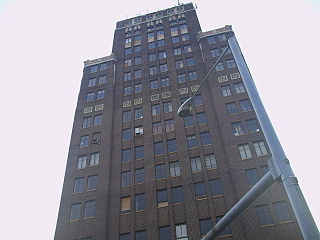
The history of Meridian, Mississippi begins in the early 19th century before European-American settlement. Originally settled by the Choctaw Indians, the land was bought by the United States according to the Treaty of Dancing Rabbit Creek in 1830. The city grew around the intersection of the Mobile and Ohio Railroad and the Southern Railway of Mississippi and developed a largely rail-based economy. Although much of the city was burned down in the Battle of Meridian during the American Civil War, the city was rebuilt and entered a "Golden Age." Between about 1890 and 1930, the city was the largest in Mississippi and a leading center for manufacturing in the Southern United States. After the decline of the railroading industry in the 1950s, the city's economy was devastated, resulting in a slow population decline. The population has continued to decline as the city has struggled to create a new, more modern economy based on newer industries. In the past 20 years or so, Meridian has attempted to revitalize the city's economy by attracting more business and industry to the city, most specifically the downtown area.

This is a list of the National Register of Historic Places listings in Detroit, Michigan.

This is a list of the National Register of Historic Places listings in Cherry County, Nebraska. It is intended to be a complete list of the properties and districts on the National Register of Historic Places in Cherry County, Nebraska, United States. The locations of National Register properties and districts for which the latitude and longitude coordinates are included below, may be seen in a map.

There are nine historic districts in Meridian, Mississippi. Each of these districts is listed on the National Register of Historic Places. One district, Meridian Downtown Historic District, is a combination of two older districts, Meridian Urban Center Historic District and Union Station Historic District. Many architectural styles are present in the districts, most from the late 19th century and early 20th century, including Queen Anne, Colonial Revival, Italianate, Art Deco, Late Victorian, and Bungalow.

Wayland & Fennell was an architectural firm in Idaho. Many of their works are listed on the U.S. National Register of Historic Places.
The numerous historic hotels in Meridian, Mississippi, provide insights into the city's growth and expansion, both in the late 19th and early 20th centuries and into the modern age. Many hotels were built in downtown Meridian in the early 1900s to provide lodging for passengers of the railroad, which was essential to the city's growth at the turn of the 20th century. Two of these historic hotels–the Union Hotel, built in 1910, and the Lamar Hotel, built in 1927–have been listed on the National Register of Historic Places.

The Exchange Place Historic District in Downtown Salt Lake City, Utah, United States is a historic district that was listed on the National Register of Historic Places in 1978. It included ten contributing buildings and three non-contributing buildings on a 6.2-acre (2.5 ha) area, with significance dating to 1903.
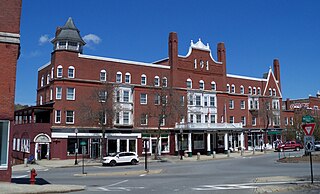
The Central Business District of Claremont, New Hampshire, is centered on Broad Street Park and the Claremont Opera House, and the area between the park and the Sugar River, whose power was responsible for Claremont's growth in the 19th century. The district was listed on the National Register of Historic Places in 1978.
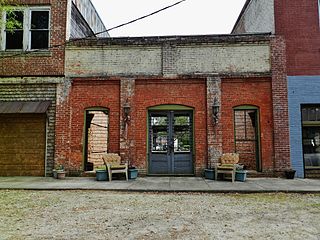
The Colbert Historic District, in Colbert, Georgia, is a 46 acres (19 ha) historic district which was listed on the National Register of Historic Places in 1984. It included 43 contributing buildings. The district is roughly bounded by 4th and 5th Streets, 4th and 8th Avenues.
The Robert Henri Museum is an art and history museum in Cozad, Nebraska that contains sketches, drawings, and paintings by Robert Henri. The Museum is located in Henri's former home. The Henri Museum is a non-profit educational 501(c)(3) organization.

The Ashland Downtown Historic District in Ashland, Oregon is a 32.2 acres (13.0 ha) historic district which was listed on the National Register of Historic Places in 2000. The district is roughly bounded by Lithia Way and C Street, Church, Lithia Park and Hargadine and Gresham Streets.
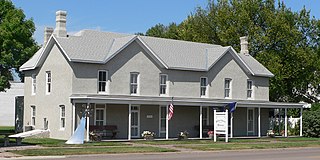
The Hendee Hotel is a historic hotel building in Cozad, Nebraska. It was built in 1879 for John J. Cozad, the founder of the city of Cozad. One of his sons, Robert Henri, became a painter. Cozad shot a man in 1882, and he sold the hotel to Stephen A. Hendee, who remained its owner until 1910. From 1883 to 1885, it was rented to A. K. Maryott, whose son was painter Miles Maryott. The building has been listed on the National Register of Historic Places since March 21, 1979.
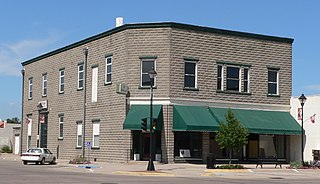
Allen's Opera House is a historic commercial building in Cozad, Nebraska. It was built by Charles Hart and Mr. Shanholt in 1906 for Charles E. Allen, a businessman and banker who co-owned the Cozad State Bank and the Allen General Store. Both businesses were located on the first floor. The building has been listed on the National Register of Historic Places since September 28, 1988.

Haralson Bleckley was an American architect who designed many buildings in his hometown of Atlanta, Georgia. Several of his works are listed on the National Register of Historic Places (NRHP). His office was in the Flatiron Building. He also proposed the Bleckley Plaza Plan, a largescale architectural project that would have seen the creation of a large plaza in downtown Atlanta.


















